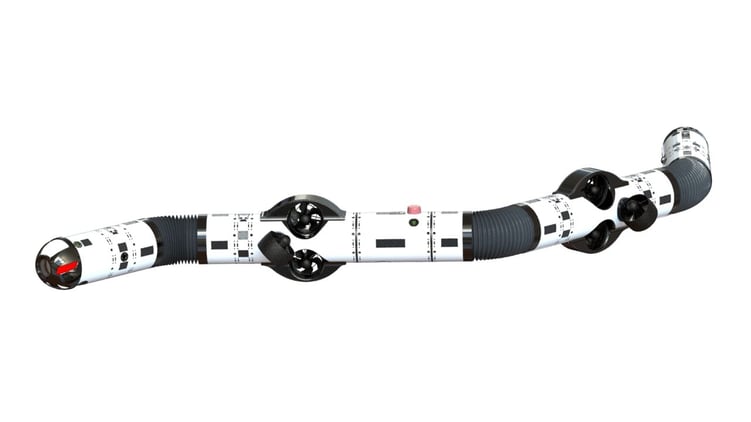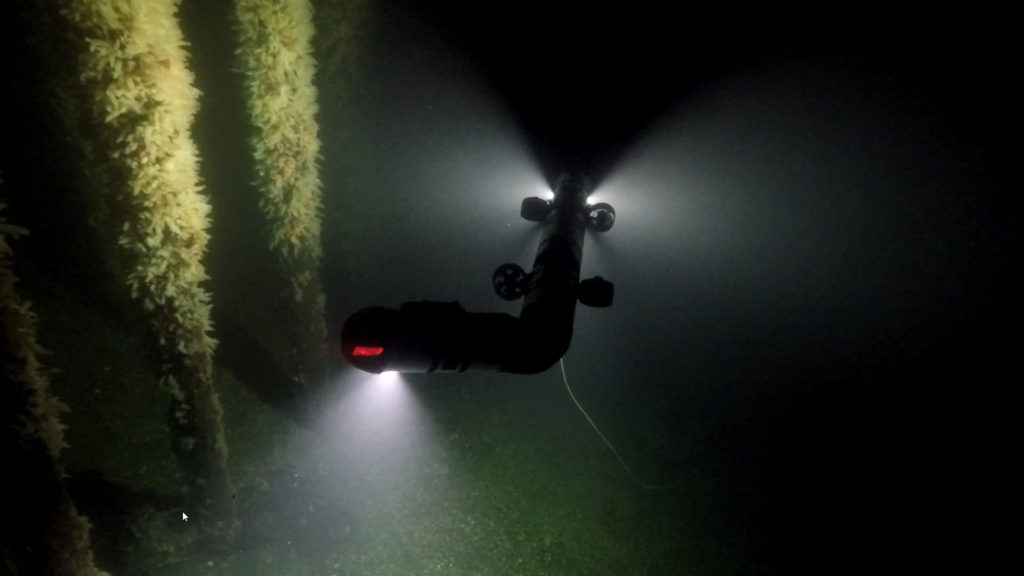Eelume robots - 10 years of experience
Eelume robots leverage 10 years of experience in advancing cutting-edge technology, providing...

At the end of this year, Eelume will be ready to demonstrate their autonomous underwater snake robot. Next year they will hit the commercial market.
If you see a video of Eelumes snake robot, you might for a second believe you are watching a trailer for the next big sci-fi movie. But you are not. You are looking at how inspections and maintenance of infrastructure on the seabed can be done.
– We develop a fantastic underwater robot. The slim robot is a combination of joints, thrusters and various payload modules, says Morten Bjerkholt. He is the CEO of Eelume.
The main purpose of the robot is to inspect and do maintenance work on infrastructure below sea level.
One important aspect of the robot is that it is designed and engineered to live on the seabed. Because of this, companies don’t have to use expensive ships to carry the robot out to the area they need it. This also means that they don’t have to pay attention to weather condition at sea.
– With our robot at the seabed they can do inspections and interventions at any time. This will limit the costs of inspections and maintenance, says Bjerkholt.
When Eelume was started in 2014, they looked towards the oil and gas industry and found a good partner in Equinor.
– This is still a big and important market for us. However, oil and gas is not so “hot” these days. That is why we also look toward other markets, for example offshore wind, says Bjerkholt.
The robotic snake is built after the LEGO-principle.
– The robot consists of different modules. For example, battery modules, thruster modules and pay load modules. The modules can be changed, depending on what the customer need it to do. This has been an important principle for us from the start.
Because the robot can use several different modules, it can easily be converted to use in other industries and markets.
– Right now, we are developing an environment sensor module which can be used to measure environmental parameters in the ocean, such as methan, oxygen, fluor, temperature etc..
One of the industries Eelume is looking towards, is offshore wind and the aquaculture industry.
– Because of the modules, we can serve a wide range of industries, even though the robot initially was built with the subsea oil and gas industry in mind.

After years of research and development, Eelume soon will be ready to demonstrate the snake robot.
– We have solved the mechanics of the robot. This year we will demonstrate that the robot operates autonomously, like a self-steering, subsea Tesla.
And next year, Eelume will hit the commercial marked.
– We have already delivered a snake robot to NTNU. Currently that one has a thin fiber cable connected to it, but it will be upgraded this year to operate autonomously and the cable will be removed.
Within the first six months of 2022, Eelume will enter the commercial marked with their wireless snake robot.Many have already shown their interest in the robot, and we get a lot of inquiries.
– What are your ambitions for the coming years?
– We aim to sell 30 to 35 snake robots in the next five years.
– How is the competition?
– There are several other companies that we have to compete with. Our advantage is the unique shape of the robot, and the joints that gives it the ability to maneuver like no other subsea robot.
– What is the next step when the snake robot has reached the commercial market?
– We will continue to develop the robot and the modules. The technology develops fast, and we have to be a part of the development. We can’t lean back when we start to deliver our robots to the customers.
Today the robot can go down to 500 meters.
– At that depth, the robot covers all the installations at Norwegian continental shelf.
But the plan is that the robot in time can go even deeper.
– We have received requests for a robot that can go down to 1500 and 3000 meters deep. This is something we can offer eventually.
Eelumes snake robot has been noticed, both national and international. In January CNN wrote an article about the robot.
– We were very surprised when they contacted us. The timing was perfect, and its always fun to be noticed, especially by someone like CNN.
And the attention caused by the article has been positive for Eelume.
– The article has not given us any sales yet, but we got lots of new contacts because of the article.
Only three monts before the CNN wrote about Eelume, they wrote an article about Zeabus and their autonomous electric ferries. Both Eelume and Zeabuz are located in Trondheim.

By some, Trondheim is called the technology capital of Norway. To be a part of the technology environment in Trondheim has been important for Eelume.
– Eelume was established as a spin-off from the Norwegian University of Science and Technology (NTNU). Without research at NTNU and SINTEF there would be no Eelume. Our CTO, Mr. Pål Liljebäck did his PhD. within snake robotics at NTNU.
– Research which can be turned into industrial solutions and products is everything. There are a lot of advanced mathematics and sensor technology needed to make our robot working. For Eelume it’s important to be a part of an environment where development of new technology stands in the forefront.
And Eelume needs more people with the right competence.
– In this sector, we see a craving for competent people. This also applies to us. So, if you have the right competence, we need more people on our team, says Bjerkholt.
Eelume robots leverage 10 years of experience in advancing cutting-edge technology, providing...
Trondheim-based ocean tech company Eelume is set to play a key role in one of...
Ocean Autonomy Cluster members were well represented at the Defense Conference 2024.